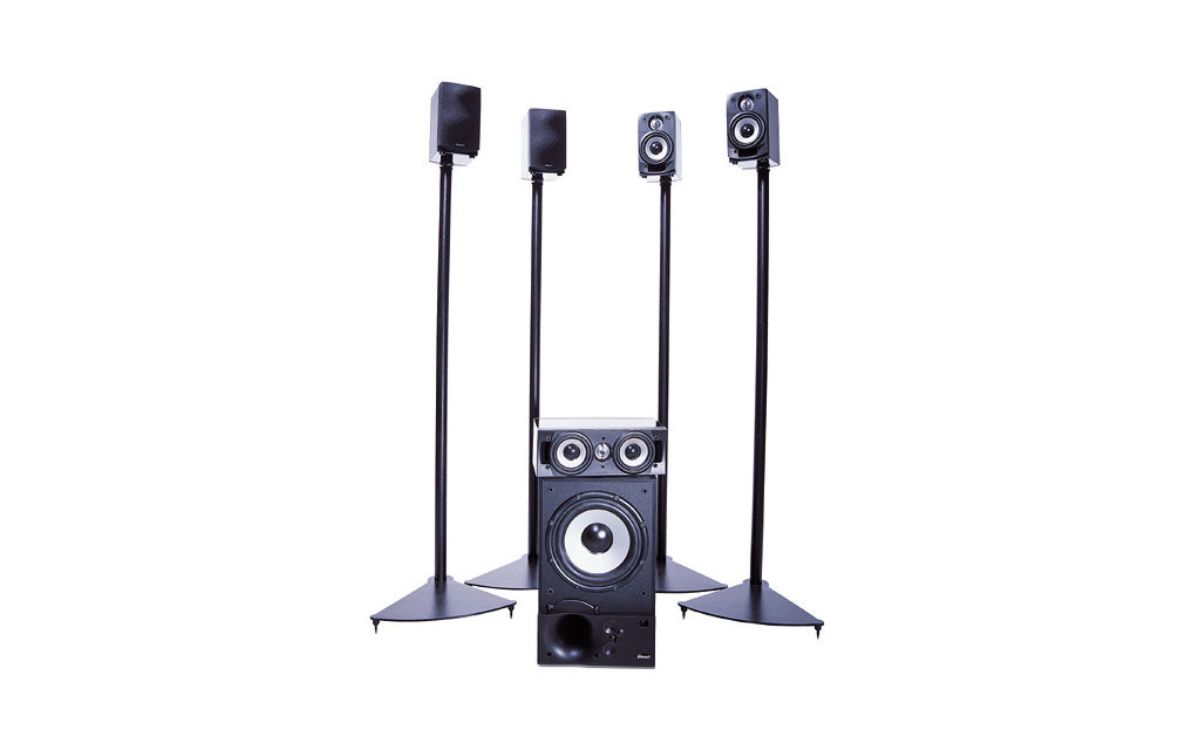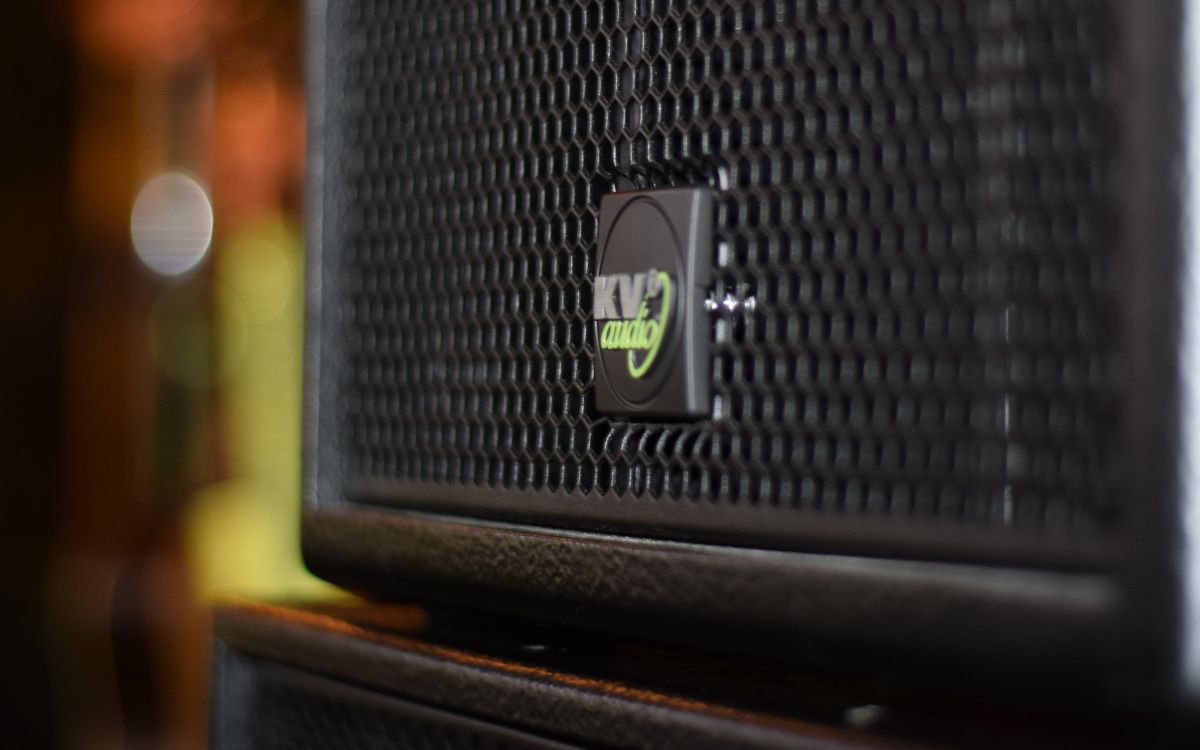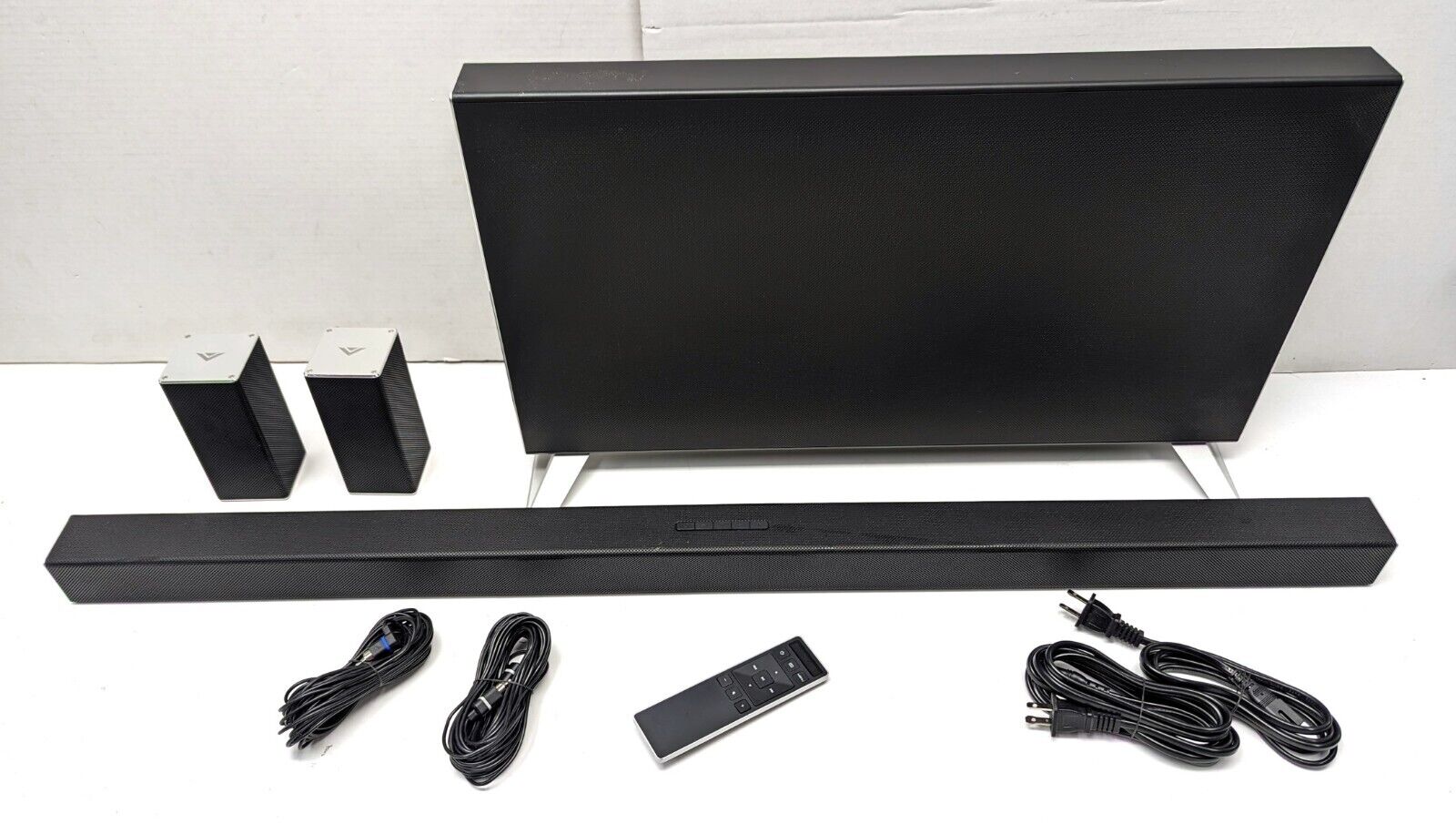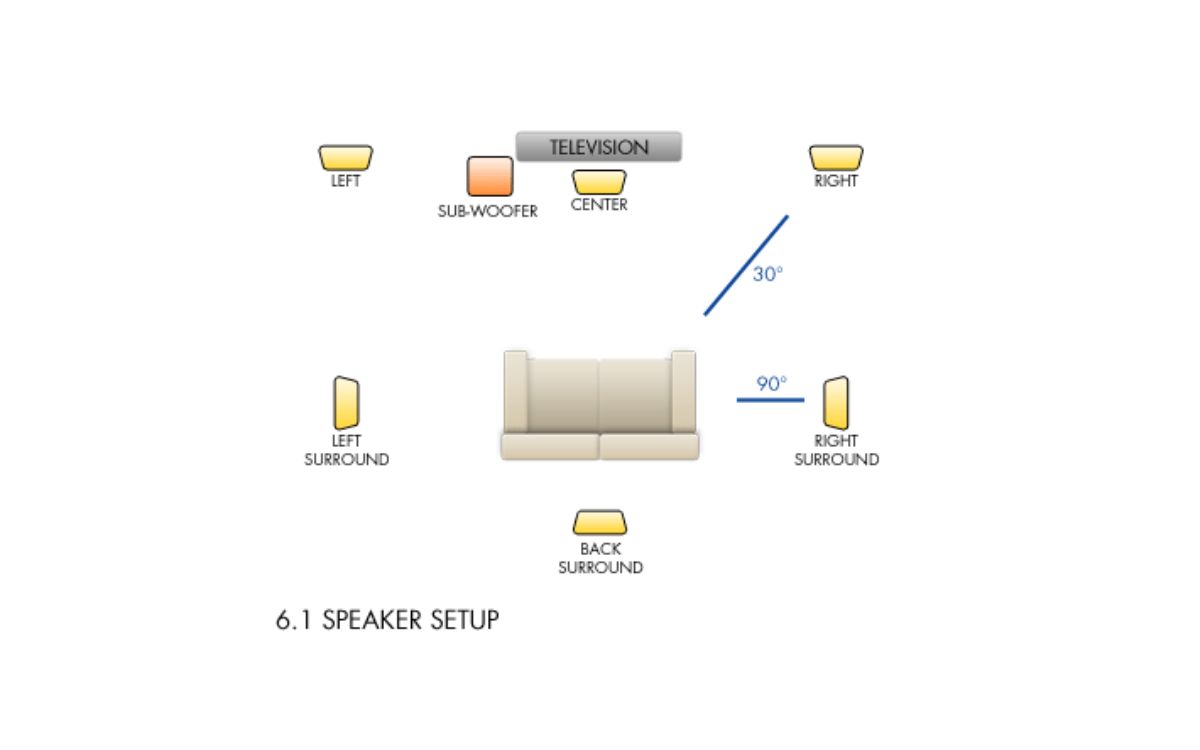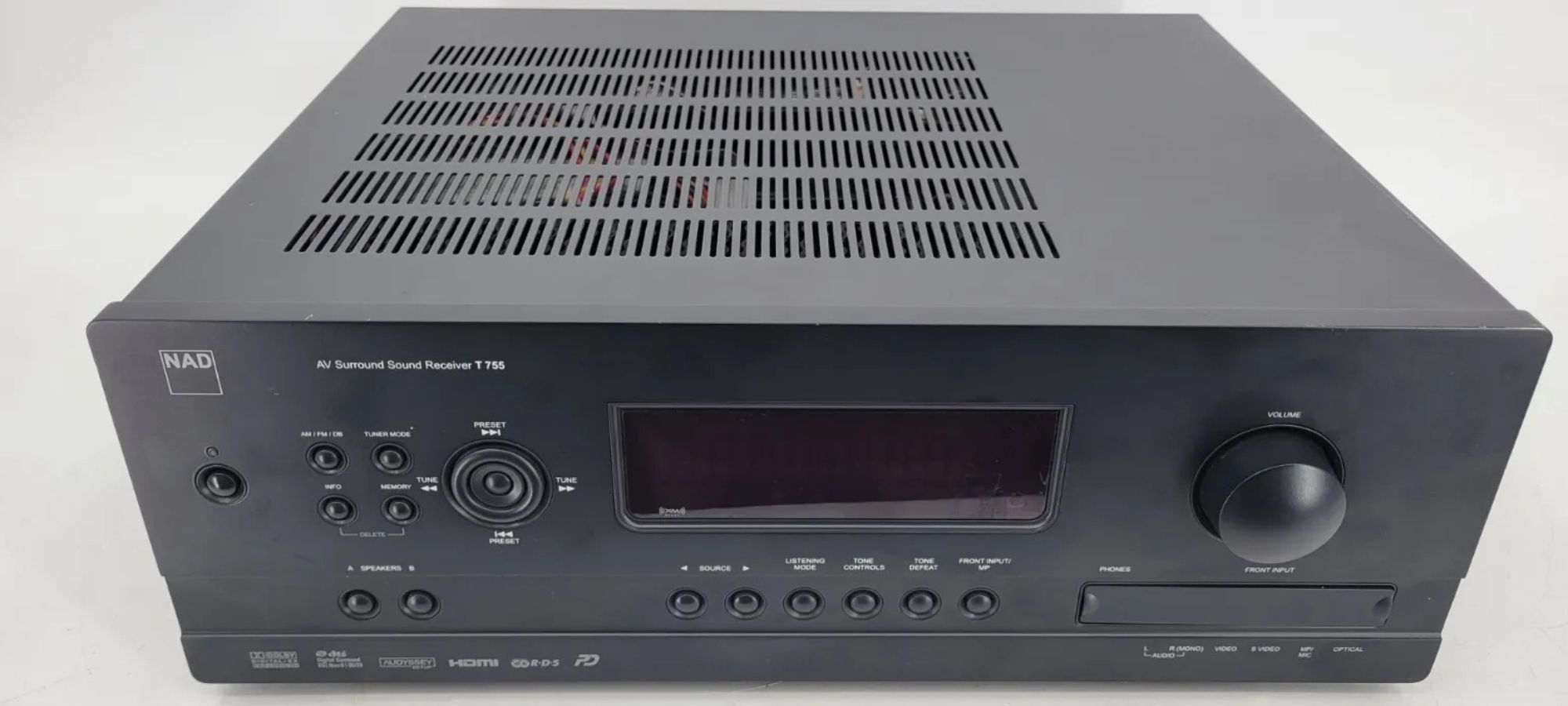Home>Production & Technology>Surround Sound>Which Is Best 5.1 Or 7.1 Surround Sound
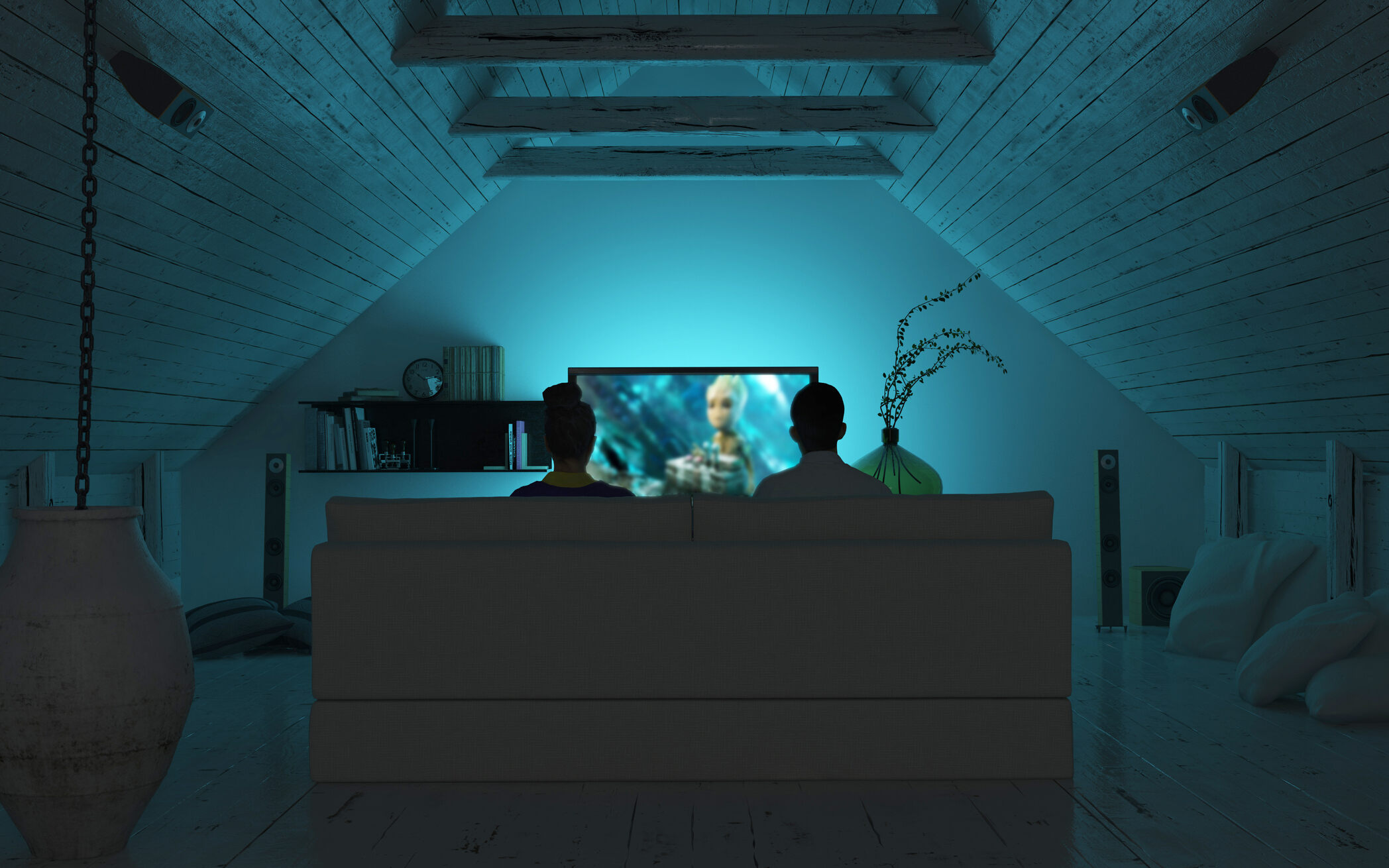

Surround Sound
Which Is Best 5.1 Or 7.1 Surround Sound
Modified: January 22, 2024
Discover the best surround sound option for your home theater setup. Learn the differences between 5.1 and 7.1 surround sound systems and choose the perfect one for an immersive audio experience.
(Many of the links in this article redirect to a specific reviewed product. Your purchase of these products through affiliate links helps to generate commission for AudioLover.com, at no extra cost. Learn more)
Table of Contents
Which Is Best 5.1 Or 7.1 Surround Sound
Introduction
Surround sound systems have revolutionized the audio experience, allowing us to fully immerse ourselves in movies, music, and games. With advancements in technology, there are now different configurations available, such as 5.1 and 7.1 surround sound systems. But which one is the best? This article will explore the differences between 5.1 and 7.1 surround sound setups and help you make an informed decision based on your needs and preferences.
Both 5.1 and 7.1 surround sound systems are designed to deliver a more immersive audio experience by utilizing multiple speakers strategically placed around a room. These speakers work together to create a sense of three-dimensionality and spatial awareness, making you feel like you’re right in the middle of the action.
Before deciding which configuration is right for you, it is important to understand the key differences between 5.1 and 7.1 surround sound systems. While both offer an immersive listening experience, there are certain nuances that set them apart.
In a 5.1 surround sound setup, the number ‘5’ represents the five main speakers, which consist of a center speaker, two front speakers (left and right), and two rear speakers, usually placed behind the listener. The ‘.1’ indicates the presence of a dedicated subwoofer for low-frequency audio reproduction. This configuration provides a dynamic and immersive sound experience, with the rear speakers adding depth and dimension to the audio.
On the other hand, a 7.1 surround sound system takes the immersion to the next level by adding two additional speakers to the setup. These speakers, known as side speakers, are positioned between the front and rear speakers on the sides of the listening area. By adding these speakers, the 7.1 setup offers even more precise localization of sound and a wider soundstage.
When choosing between 5.1 and 7.1 surround sound systems, there are several factors to consider, including the size and layout of your room, your budget, and your specific audio preferences. The purpose of this article is to provide you with the necessary information to make an informed decision based on your individual needs.
Overview of Surround Sound Systems
Surround sound systems are audio setups that are designed to create a more immersive listening experience by distributing sound from multiple speakers strategically placed around a room. These systems aim to replicate the way sound is perceived in real life, with specific audio cues coming from different directions.
The concept of surround sound originated in movie theaters, where sound engineers used multiple speakers to enhance the on-screen action and immerse the audience in the film. Over time, surround sound systems have become increasingly popular in home theater setups and gaming environments, providing an enhanced audio experience that complements the visual content.
There are several different configurations of surround sound, with the most common being 5.1 and 7.1 systems. The numbers in these configurations refer to the number of speakers and subwoofers included in the setup.
A 5.1 surround sound system consists of five main speakers and a subwoofer. The main speakers include a center speaker, two front speakers (left and right), and two rear or surround speakers. The subwoofer is responsible for reproducing low-frequency sounds, such as deep bass tones and rumbling effects.
A 7.1 surround sound system, as the name suggests, includes an additional two speakers compared to the 5.1 setup. These extra speakers are known as side speakers and are positioned between the front and rear speakers on the sides of the listening area.
Both 5.1 and 7.1 surround sound systems aim to create a more realistic and immersive audio experience by enveloping the listener in a bubble of sound. By strategically placing speakers around the room, these systems deliver directional audio cues that enhance the sense of depth, dimension, and realism.
When it comes to choosing between a 5.1 and 7.1 surround sound system, there are various factors to consider, including the size and layout of your room, your budget, and your personal preferences. Understanding the differences between these configurations will help you make an informed decision that suits your specific needs.
Understanding 5.1 Surround Sound
5.1 surround sound is a configuration that consists of five main speakers and one subwoofer. The “5” in 5.1 refers to the placement of five main speakers, while the “1” indicates the presence of one subwoofer. This setup is widely used in home theater systems and provides a captivating audio experience that enhances the viewing of movies, TV shows, and gaming.
In a 5.1 surround sound system, the five main speakers are strategically positioned around the room to create an immersive soundstage. These speakers include a center speaker, which is typically placed above or below the television screen to reproduce dialogue and on-screen sound effects with clarity and precision.
The two front speakers, known as the left and right channels, are usually positioned on either side of the television or the viewing area. They provide the bulk of the sound and help create a sense of imaging, where specific sounds are localized to certain areas of the screen or room.
The two rear speakers, often referred to as surround or back speakers, are placed behind the listener to add depth, ambiance, and envelopment to the audio experience. These speakers are responsible for reproducing sound effects that pan from side to side or move from the front to the back, creating a sense of being surrounded by sound.
Completing the 5.1 surround sound system is the subwoofer, which handles the low-frequency sounds, including deep bass tones and rumbling effects. The subwoofer adds richness, impact, and depth to the audio by delivering accurate and powerful low-end frequencies.
With the distribution of sound across multiple speakers, 5.1 surround sound provides a more immersive listening experience compared to traditional stereo systems. It allows for a more accurate localization of sound, making you feel like you’re truly in the middle of the action.
When setting up a 5.1 surround sound system, it is important to consider the layout of your room and the placement of the speakers. Each speaker should be positioned carefully to optimize sound distribution and create a balanced audio experience. Additionally, adjusting the volume levels and fine-tuning the system’s settings can further enhance the overall performance and enjoyment of the surround sound setup.
Overall, a 5.1 surround sound system offers a substantial upgrade in audio quality and immersion compared to traditional two-channel setups. It brings movies, music, and games to life by enveloping the listener in a multidimensional soundstage, allowing for a more engaging and captivating entertainment experience.
Understanding 7.1 Surround Sound
7.1 surround sound takes the immersive audio experience of surround sound systems to the next level by adding two additional speakers to the 5.1 configuration. The “7” in 7.1 refers to the placement of seven main speakers, while the “1” still represents the subwoofer present in the setup. This advanced configuration creates an even more precise and enveloping soundstage, providing a heightened sense of realism and immersion.
In addition to the five main speakers found in a 5.1 system (center, front left, front right, surround left, and surround right), a 7.1 surround sound system includes two extra speakers known as side speakers. These side speakers are positioned between the front and rear speakers, adding width to the soundstage and improving spatial localization of sound.
The center speaker in a 7.1 setup is responsible for reproducing dialogue and on-screen sound effects, ensuring clear and focused audio. The front left and front right speakers deliver the majority of the sound, creating a wide and expansive soundstage in front of the listener.
The two rear or surround speakers provide ambient sounds and positional audio cues, immersing the listener from behind. With the addition of side speakers, the 7.1 configuration enhances lateral sound movement, allowing for more precise location and movement of objects or sound effects within a scene.
Like in a 5.1 system, the subwoofer plays a crucial role in a 7.1 setup by handling low-frequency sounds, such as deep bass tones and rumbles. The subwoofer adds depth, impact, and richness to the audio experience, creating a more immersive and visceral effect.
Setting up a 7.1 surround sound system requires careful placement of the speakers to optimize sound distribution and ensure a balanced audio experience. The side speakers should be positioned at the sides of the listening area, slightly behind the front speakers, to create an expanded soundstage.
With its additional side speakers, a 7.1 surround sound system offers even greater spatial and directional audio accuracy compared to a 5.1 setup. The extra speakers allow for a more seamless panning of sound across the room, resulting in a heightened sense of audio immersion and realism.
It’s important to note that not all media content is mixed specifically for 7.1 surround sound. Many movies, TV shows, and games are still predominantly designed for 5.1 systems. However, a 7.1 system can still provide an enhanced audio experience by upmixing the content to utilize all available speakers.
In summary, a 7.1 surround sound system provides an advanced audio solution, expanding on the immersive qualities of a 5.1 setup. With the addition of side speakers, the 7.1 configuration delivers even more precise sound localization, wider sound dispersion, and a heightened sense of audio realism, making it an excellent choice for those seeking the ultimate audio experience.
Comparison of 5.1 and 7.1 Surround Sound Systems
When choosing between a 5.1 and 7.1 surround sound system, it is important to understand the differences and consider your specific needs and preferences. Here is a comparison of the two configurations to help you make an informed decision:
- Number of Speakers: The main difference between 5.1 and 7.1 surround sound systems is the number of speakers. A 5.1 system consists of five main speakers (center, front left, front right, surround left, and surround right) and one subwoofer, while a 7.1 system adds two additional side speakers between the front and rear speakers.
- Sound Localization: Both configurations provide excellent sound localization, allowing you to pinpoint the exact direction of audio sources in a scene. However, the addition of side speakers in a 7.1 system offers even more precise sound positioning and a wider soundstage, resulting in a more immersive and realistic audio experience.
- Sound Dispersion: The extra side speakers in a 7.1 system enhance the dispersion of sound, creating a broader audio coverage and wider sweet spot. This makes 7.1 systems ideal for larger rooms or spaces where multiple listeners are present, as it ensures a more consistent audio experience throughout the listening area.
- Media Compatibility: The majority of media content, including movies, TV shows, and games, are mixed for 5.1 surround sound systems. While many modern receivers can upmix content for 7.1 systems, a 5.1 setup will still offer excellent sound reproduction and compatibility with most media sources.
- Room Size and Layout: The size and layout of your room are important factors to consider when deciding between 5.1 and 7.1 systems. Larger rooms or spaces with an irregular layout may benefit from the added speakers in a 7.1 system, as they help to fill the space more effectively and provide a more enveloping audio experience.
- Budget: Another factor to consider is your budget. Generally, a 7.1 system will require more speakers, which can lead to increased equipment and installation costs compared to a 5.1 system. However, the price difference may vary based on the specific brands and models you choose.
Ultimately, the choice between a 5.1 and 7.1 surround sound system depends on your specific requirements and preferences. If you have a larger room, desire a wider soundstage, or want the most immersive audio experience possible, a 7.1 system may be the best choice for you. However, if you have a smaller room, a limited budget, or primarily consume media that is mixed for 5.1 systems, a 5.1 system will still provide a fantastic audio experience.
It’s worth noting that both 5.1 and 7.1 systems can be compatible with future audio formats, such as Dolby Atmos, by incorporating additional upward-firing or in-ceiling speakers. This allows for even more immersive three-dimensional audio experiences in the future.
Ultimately, the decision between 5.1 and 7.1 surround sound systems boils down to your specific needs, the size and acoustic properties of your room, and your budget. Regardless of which configuration you choose, both 5.1 and 7.1 setups offer a significantly enhanced audio experience compared to traditional stereo systems, immersing you in sound and bringing your entertainment to life.
Factors to Consider When Choosing between 5.1 and 7.1
When deciding between a 5.1 and 7.1 surround sound system, there are several important factors to consider. These factors will help you determine which configuration is best suited for your needs and preferences:
- Room Size and Layout: The size and layout of your room play a crucial role in choosing the optimal surround sound system. A larger room may benefit from the added speakers and wider sound dispersion of a 7.1 system, whereas a smaller room may not have sufficient space to fully appreciate the benefits of a 7.1 setup.
- Budget: Consider your budget when deciding on a surround sound system. 7.1 setups typically require more speakers, which can result in higher equipment and installation costs compared to a 5.1 system. Determine your budget and decide how much you are willing to invest in your audio setup.
- Media Compatibility: Take into account the types of media you commonly consume. While most movies, TV shows, and games are mixed for 5.1 systems, 7.1 systems are becoming more common. If you primarily watch or play content that is compatible with a 7.1 system, it may be worth considering for a more immersive audio experience.
- Personal Preferences: Think about your personal preferences when it comes to audio. Do you enjoy a wider soundstage and more precise sound localization? Are you willing to invest in additional speakers and equipment for a more immersive experience? Consider what kind of audio experience you desire and choose the configuration that aligns with your preferences.
- Future Compatibility: Consider the future compatibility of your chosen configuration. With emerging audio formats like Dolby Atmos, you may want to think about whether your chosen system has the flexibility to accommodate additional speakers or upgrades in the future.
By considering these factors, you will be able to make an informed decision about whether a 5.1 or 7.1 surround sound system is best for you. Remember that both configurations offer a significant upgrade compared to traditional stereo systems, and both can provide an immersive audio experience. It ultimately comes down to personal preference, room size, budget, and the media you consume.
It is also worth noting that the choice between 5.1 and 7.1 is not necessarily a permanent one. With the availability of modern receivers and speaker systems, you can often start with a 5.1 system and expand it to a 7.1 configuration in the future if desired.
Take the time to evaluate your specific needs and consider these important factors to ensure that your chosen surround sound system aligns perfectly with your audio preferences and enhances your overall entertainment experience.
Pros and Cons of 5.1 Surround Sound
5.1 surround sound systems offer numerous advantages and considerations to keep in mind when deciding on your audio setup. Here are the pros and cons of 5.1 surround sound:
- Pros:
- Immersive Audio: 5.1 surround sound provides an immersive listening experience, enveloping you in a multidimensional soundstage and enhancing your enjoyment of movies, music, and games.
- Directional Audio: With five speakers strategically placed around your listening area, 5.1 systems offer excellent sound localization, allowing you to precisely perceive the direction from which sound is originating.
- Cost-Effective: Compared to a 7.1 setup, a 5.1 system generally requires fewer speakers and is often more cost-effective, making it a popular choice for those on a budget.
- Wide Media Compatibility: The majority of media content, including movies, TV shows, and games, are mixed for 5.1 surround sound systems. This ensures a wide range of compatible content that can be enjoyed to its fullest potential.
- Simple Installation: Setting up a 5.1 system is typically straightforward and easier compared to the more complex installation process of a 7.1 system, which involves additional speakers and wiring.
- Cons:
- Limited Sound Dispersion: While a 5.1 system provides excellent sound localization, it may have a more limited sound dispersion compared to a 7.1 system. This can result in a narrower sweet spot and less consistent audio quality across an entire room.
- Less Immersive Than 7.1: For those seeking the ultimate immersive audio experience, a 5.1 setup may not provide the same level of envelopment and precision as a 7.1 system due to the absence of side speakers.
- Room Size Limitations: In larger rooms, the sound may not reach every corner effectively with just the five speakers of a 5.1 system. This limitation can impact the overall audio experience and may require additional speakers or alternative audio solutions.
- Potential Upgradability: While a 5.1 system itself offers excellent audio performance, if you foresee wanting an even more immersive audio experience, you may need to invest in future upgrades or consider a 7.1 system from the start.
Consider these pros and cons in the context of your specific needs and preferences to determine whether a 5.1 surround sound system is the right choice for you. While it may have certain limitations, a well-configured 5.1 setup can still provide a captivating audio experience and greatly enhance your enjoyment of various forms of multimedia.
Pros and Cons of 7.1 Surround Sound
7.1 surround sound systems offer distinct advantages and considerations that should be taken into account when weighing your audio setup options. Here are the pros and cons of 7.1 surround sound:
- Pros:
- Enhanced Immersion: With the addition of two side speakers, a 7.1 surround sound system delivers an even more immersive audio experience compared to a 5.1 setup. The extra speakers provide a wider soundstage, allowing for improved sound localization and a more enveloping audio environment.
- Precise Sound Localization: The side speakers in a 7.1 configuration enhance the accuracy of sound placement, resulting in greater spatial positioning and an increased sense of realism. This can be particularly beneficial for gaming and movies that utilize surround sound technology.
- Wider Sound Dispersion: The presence of side speakers in a 7.1 system expands the sound dispersion, ensuring a more even distribution of audio across the room. This leads to a broader sweet spot and improved audio quality, especially in larger listening areas or rooms with irregular layouts.
- Future-Proofing: Investing in a 7.1 system allows for greater compatibility with future audio formats and technologies. Systems that support 7.1 are more likely to adapt easily to emerging surround sound standards, offering a sense of future-proofing for your audio setup.
- Cons:
- Increased Complexity and Cost: A 7.1 surround sound system requires the addition of two side speakers, which can increase the complexity and cost of the setup. Additional speakers mean more wiring and potentially higher equipment expenses, making it a pricier option compared to a 5.1 configuration.
- Media Compatibility Concerns: While the number of media sources mixed for 7.1 surround sound is growing, it may still be less common compared to content mixed for 5.1 systems. Therefore, there could be instances where content doesn’t fully utilize the extra speakers, limiting the benefits of a 7.1 system.
- Room Limitations: A 7.1 system may not be suitable for smaller rooms or spaces with limited placement options. The additional speakers and their optimal positioning require a certain amount of space and the ability to position them correctly for optimal sound distribution.
- Installation Challenges: Due to the increased number of speakers, setting up a 7.1 system can be more complex and time-consuming than a 5.1 setup. Properly positioning and balancing the additional speakers can present challenges, especially in rooms with limited space or challenging acoustics.
Consider the pros and cons of 7.1 surround sound in relation to your specific needs and preferences. While a 7.1 system offers an elevated audio experience with improved immersion and sound localization, it also comes with added complexity and potential higher costs. Evaluate your room size, budget, and media compatibility requirements to determine if a 7.1 system is the right choice for you.
Conclusion
Choosing between a 5.1 and 7.1 surround sound system ultimately depends on your specific needs, preferences, room size, and budget. Both configurations offer significant enhancements over traditional stereo systems, immersing you in a multidimensional audio experience.
A 5.1 setup provides a cost-effective option with excellent sound localization and compatibility with a wide range of media content. It is a popular choice for those on a budget or with smaller rooms. On the other hand, a 7.1 system takes the immersion to the next level with the addition of side speakers, offering a more expansive soundstage, enhanced audio precision, and increased realism.
When making your decision, consider the room size, layout, and desired audio experience. Evaluate your budget and the media compatibility of each system. Keep in mind that both 5.1 and 7.1 configurations can be compatible with future audio formats through upgrades and adaptations.
Remember, the audio setup you choose is subjective and should cater to your preferences. Whether you opt for a 5.1 or 7.1 system, both will elevate your entertainment experiences with a heightened sense of immersion and audio quality.
Lastly, be sure to properly set up and calibrate your surround sound system to maximize its performance. Proper speaker placement, optimized volume levels, and fine-tuning can greatly enhance the audio experience, regardless of the configuration you choose.
Ultimately, the decision between 5.1 and 7.1 surround sound systems lies in your hands. Consider the pros and cons, weigh the factors that matter most to you, and make an informed choice that will provide you with years of audio enjoyment.




